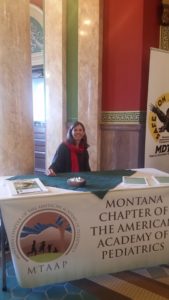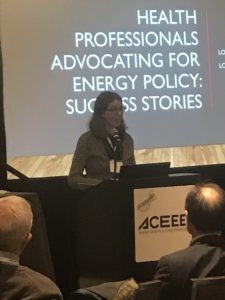A Pediatrician’s Journey into Climate Advocacy
I am a pediatrician and I advocate on behalf of America’s greatest resource – our children. The first patient that died under my care was an infant who stopped breathing in his sleep. He was rushed to the hospital with CPR in progress but we could not resuscitate him. I can still hear the lullaby his mother sang to him in their last moments together. Back then, we had no clue what caused a crib death, as they were called at that time. That was also before we knew that smoking by a pregnant woman increases the risk of infant death after the baby is born and way before we discovered that the particulate matter breathed in by a pregnant woman might put her baby at higher risk of SIDS or SUID deaths, as they are now called. Now, we know that dirty air breathed by a pregnant mom leads to increased risk of numerous problems for her unborn child – premature birth, stillbirth, intrauterine growth retardation. No matter how much a pregnant mom tries to do all the right things to protect her unborn baby – eating right, exercising, avoiding chemicals, getting check-ups – she cannot prevent the risks to her baby when she breathes dirty air.


I worked for the last 3 decades with Native American children and families. It was the growing research regarding the damage of climate change to child health that caused me to switch from traditional public health work to climate-related public health advocacy. Many other health care providers have done the same.
One avenue for climate advocacy is through the American Academy of Pediatrics (AAP). Pediatricians are respected members of their communities. The health voice is a powerful player in advancing climate solutions. We began a program in the past year that identified at least one climate advocate in every chapter of the AAP – all 50 states, DC and Puerto Rico. We have been meeting monthly this year. Some of the advocates were veterans at advocacy and others are brand new. But we all learn from, and strengthen, each other.


Prior to this initiative, only one AAP Chapter had a Climate Committee. Now, nine do and one has a special interest group. Only one chapter had a resolution (noting that climate change is happening now, human caused, affecting our patients now, and requiring immediate and meaningful action). Eight Chapters now have this, and ten are working to get a resolution approved. Several state chapters added renewable energy and energy efficiency into the issues for which they will advocate in their state legislature. At least six chapters have added climate and health onto their website, and seven have had climate information in their newsletters. Some of the advocates are working to develop educational materials for pediatricians and their patients. They are testifying in public hearings in support of cleaner air. Many of the advocates are writing opinion pieces for newspapers and testifying on the importance of clean air at the local, state and national level. Several advocates helped create state (multi-specialty) clinician groups for climate action.
The AAP has been a leading medical organization on climate with its position papers, advocacy, and leadership at a national level, and now local and state level action on climate is activated, too. Hundreds of pediatricians share concern about climate and health and are acting on their concerns. Join us!
Dr. Lori Byron is a pediatrician and point person for the American Academy of Pediatrics’ initiative on chapter level climate advocacy. She serves on the AAP’s Council on Environmental Health. She recently completed her Masters’ Degree in Energy Policy and Climate from Johns Hopkins.
This blog is the first in a series from pediatricians we will feature throughout October, Children’s Health Month.
The American Academy of Pediatrics is a partner of Climate for Health, a coalition of health leaders committed to caring for our climate to care for our health. Founded by ecoAmerica, Climate for Health offers tools, resources, and communications to demonstrate visible climate leadership, inspiring and empowering health leaders to speak about, act on and advocate for climate solutions. Learn more about our partnership and the resources available to you here.